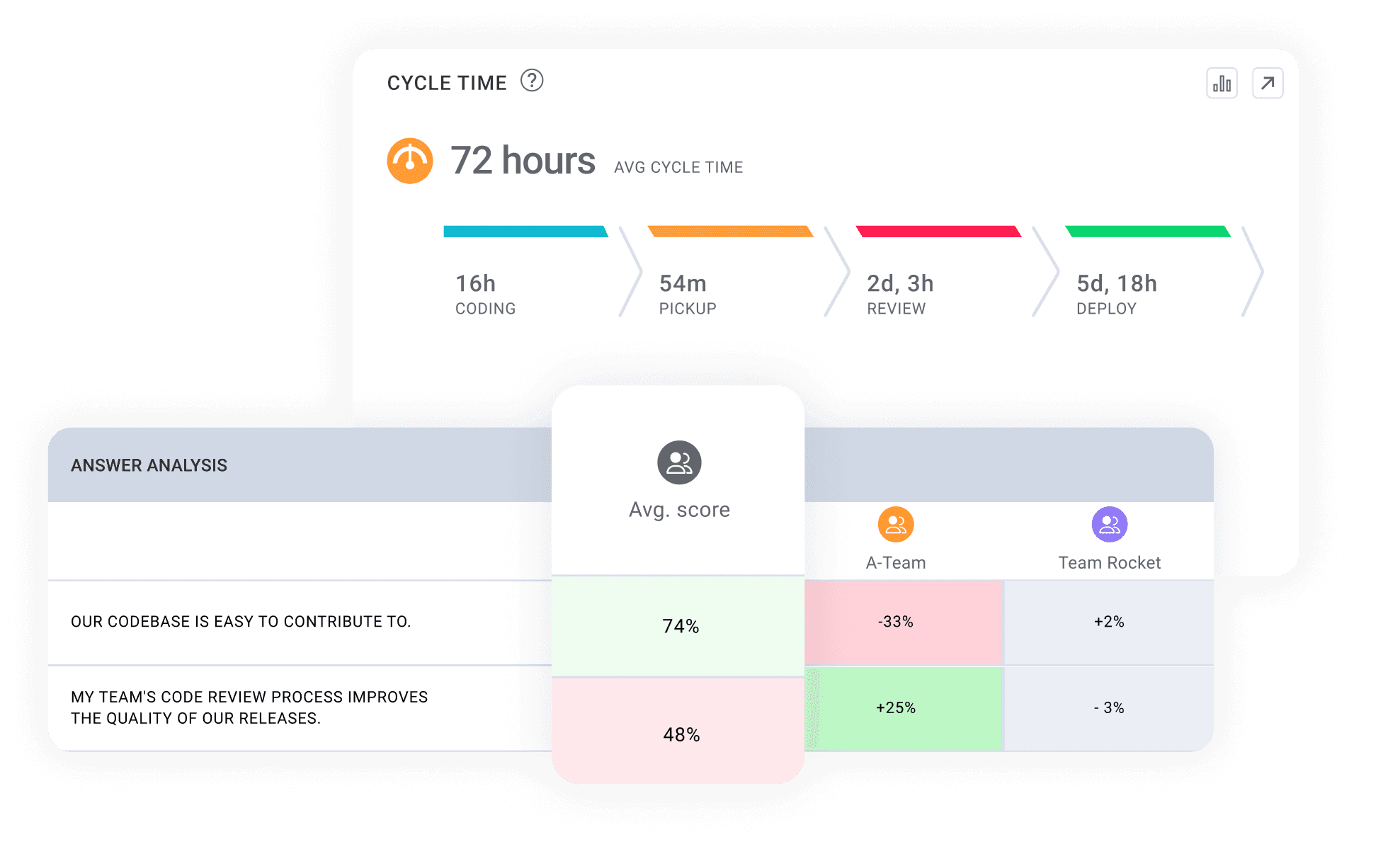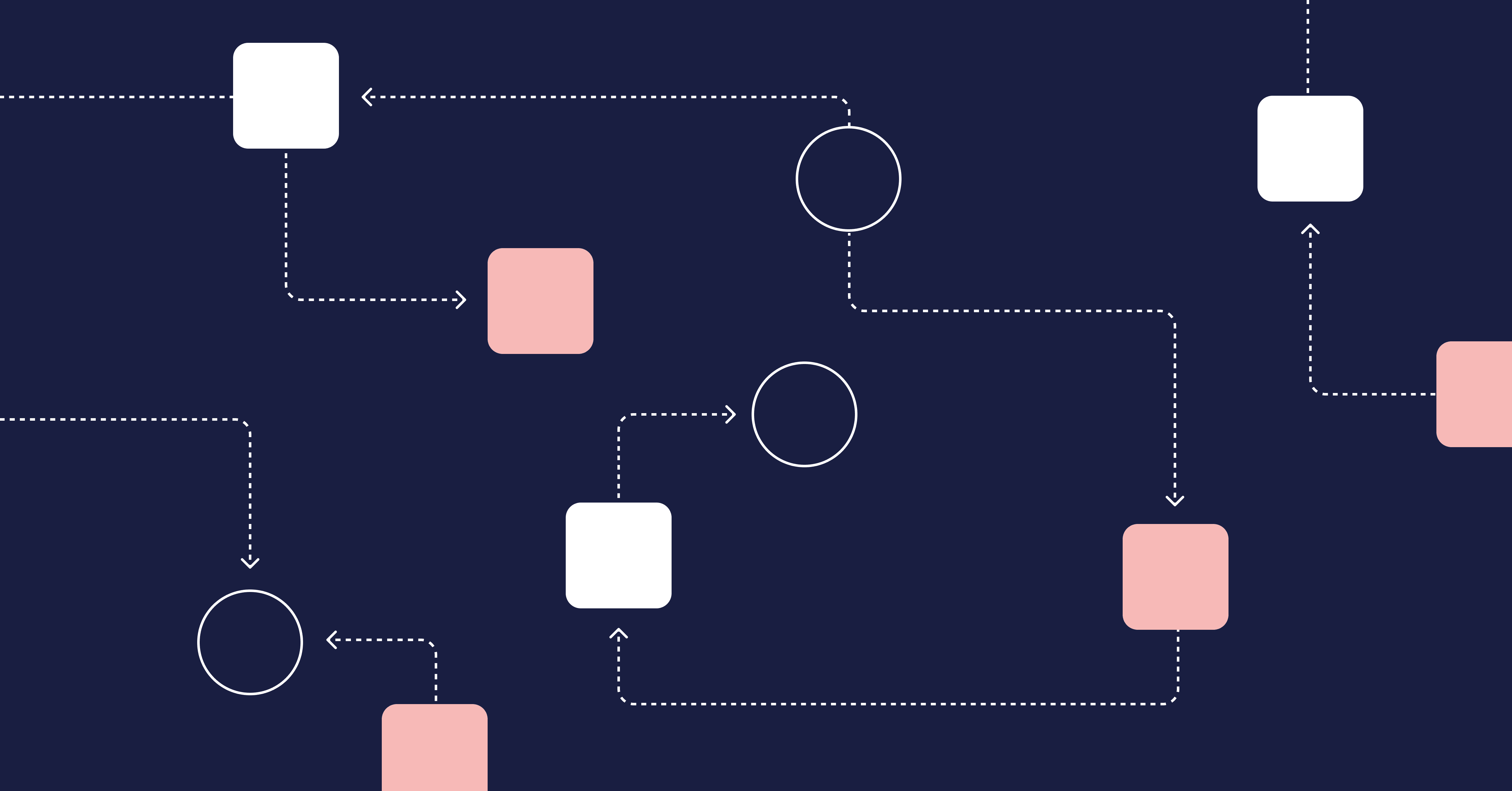Engineering leaders face an increasingly familiar challenge: as your organization scales, developer productivity often declines. Engineers spend more time wrestling with complex toolchains, navigating inconsistent environments, and waiting for approvals than actually building features that deliver business value.
This productivity tax isn't just frustrating—it directly impacts your bottom line through slower delivery, increased operational costs, and diminished developer satisfaction.
Platform engineering has emerged as the strategic solution to this challenge. By creating standardized, self-service internal developer platforms, organizations enable engineering teams to move faster while maintaining appropriate guardrails and governance.
This comprehensive blog explains platform engineering, how it differs from related disciplines, and how leading organizations implement platforms that truly accelerate development while improving reliability and security.
What Is Platform Engineering?
Platform engineering is the discipline of designing, building, and maintaining internal developer platforms that improve productivity by abstracting away infrastructure complexity. It creates standardized self-service capabilities that empower developers to provision, deploy, and monitor applications without requiring deep knowledge of the underlying infrastructure.
Modern platform engineering shifts from manual operations to self-service, from one-off solutions to standardized workflows, and from infrastructure teams as gatekeepers to platform teams as product developers.
This evolution represents a fundamental shift from infrastructure management to digital platform engineering—building software that makes software development faster, more reliable, and more accessible to all engineers in the organization.
According to the CNCF (Cloud Native Computing Foundation), platform engineering means "applying product management principles and practices to internal platform development and designing for customer experience and usability as much as for technical excellence."
The most effective software engineering platforms combine elements of infrastructure automation, workflow standardization, compliance guardrails, and self-service capabilities into a cohesive whole that meets specific organizational needs.
What Does a Platform Engineer Do?
Platform engineers build and maintain the tools, systems, and abstractions that enable application developers to move quickly and safely. Their responsibilities span infrastructure, tooling, automation, and developer experience design.
Core platform engineer responsibilities include:
- Uncover sources of friction that impact developer experience and engineering productivity and implement workflows to optimize software delivery.
- Designing and building infrastructure abstractions that hide unnecessary complexity while exposing required configuration options
- Automating repetitive processes like environment provisioning, deployment, and testing to eliminate manual toil
- Creating and maintaining deployment pipelines that enforce security and compliance requirements while reducing cognitive load
- Implementing observability solutions that provide visibility into system performance and health
- Developing internal APIs, CLIs, and portals that provide consistent interfaces to underlying systems
- Standardizing technology choices by building opinionated "golden paths" for common use cases
- Supporting application teams during incidents, rollouts, and architecture changes
While specific platform software engineer roles may emphasize particular aspects of these responsibilities, the common thread is a focus on improving developer productivity through well-designed abstractions, automation, and self-service capabilities.
Effective platform engineers distinguish themselves with a unique blend of technical skills and a developer-centric mindset. They treat internal developers as customers, design for usability as much as technical excellence, and measure success by how effectively they enable other teams to deliver business value.
Platform Engineering vs. DevOps vs. SRE
Platform engineering, DevOps, and Site Reliability Engineering (SRE) all aim to improve software delivery and reliability, but they differ in approach, scope, and day-to-day activities. Understanding these distinctions helps organizations implement the right practices for their specific needs.
Aspect | Platform Engineering | DevOps | SRE |
| Primary Focus | Building self-service platforms and developer tooling | Breaking down silos between development and operations | Ensuring system reliability and availability |
| Delivery Model | Product-based: internal platforms with defined SLAs | Culture and practice-based: shared responsibility | Service-based: reliability as a measurable outcome |
| Who Does the Work | Dedicated platform teams creating tools for other engineers | Cross-functional collaboration across dev and ops | Specialized engineers applying software approaches to operations |
| Key Metrics | Developer productivity, platform adoption, deployment frequency | Delivery velocity, deployment frequency, CFR | SLIs, SLOs, MTTR, system reliability |
| Typical Activities | Building CI/CD pipelines, infrastructure automation, self-service portals | Automating deployment, monitoring, shared on-call | Monitoring, incident response, capacity planning |
While these disciplines overlap, platform engineering specifically addresses scalability challenges by productizing infrastructure and tooling. Rather than expecting all developers to be DevOps experts, platform teams create standardized, self-service capabilities that abstract away complexity.
This distinction becomes clearer when examining their origins:
- DevOps emerged to eliminate the handoff friction between development and operations teams, promoting shared responsibility
- SRE was created to apply software engineering principles to operations problems, focusing on system reliability
- Platform engineering evolved as organizations realized that expecting all developers to handle infrastructure complexity wasn't scaling, requiring dedicated teams to build abstraction layers
Many successful organizations implement elements of all three approaches, with platform engineering providing the foundation that enables DevOps practices to scale while supporting SRE goals of system reliability.
How Platform Teams Are Structured
Effective platform teams come in different configurations depending on organizational size, technical complexity, and cultural factors. The most common structures include:
Centralized Platform Teams
In this model, a single team builds and maintains platform capabilities for the entire engineering organization. This approach offers:
Advantages:
- Consistent standards across the organization
- Clear ownership of platform components
- Efficient resource utilization
Challenges:
- May struggle to understand diverse team needs
- Can become a bottleneck as the organization scales
- Risk of building features not aligned with developer needs
When to use: Best for organizations up to medium size (50-150 engineers) or those with homogeneous technology stacks.
Federated Platform Teams
Larger organizations often implement a hub-and-spoke model where a core platform team defines standards and builds common components, while embedded platform engineers work directly with product teams.
Advantages:
- Better alignment with specific team needs
- Scalable as the organization grows
- Improves adoption through closer collaboration
Challenges:
- Requires strong governance to maintain consistency
- More complex coordination and prioritization
- Higher staffing requirements
When to use: Ideal for larger organizations (150+ engineers) or those with diverse technology needs across teams.
Real World Platform Engineering Examples
Netflix: Centralized Platform Engineering
At Netflix, reliability is foundational to delivering the joy their customers expect. Whether users are enjoying a new series or engaging with innovative features, uninterrupted service is critical. This commitment to reliability is exemplified by the CORE (Critical Operations and Reliability Engineering) team, a specialized group focused solely on maintaining the uptime of Netflix’s streaming platform. Unlike traditional SRE teams, CORE doesn’t run production services or write application code. Instead, they orchestrate the company-wide response to systemic risks and incidents, enabling service teams to stay resilient and responsive.
Netflix’s service ownership model puts reliability in the hands of individual teams, empowering them to build and operate their own services. But when incidents escalate beyond the scope of a single service, CORE steps in. They monitor top-level business metrics like stream starts per second, manage alerts, and coordinate rapid responses across engineering teams. During an incident, CORE engineers act as Incident Managers, making key decisions, engaging service owners, analyzing technical systems, and communicating across internal and external stakeholders. Once the issue is resolved, they lead post-incident reviews that focus on sociotechnical learnings, emphasizing improvements to both systems and processes.
What sets CORE apart—and makes them a powerful example for platform engineering teams—is their ability to maintain a wide-lens view of operational health across the organization. When not managing incidents, they proactively consult on architecture and observability, identify systemic risks, and maintain the internal tooling that powers their response capabilities. Their centralized role enables them to surface insights that transcend individual services, turning reliability into an organizational capability rather than a localized effort. For platform teams, this model reinforces the value of having a dedicated function that safeguards critical systems, drives operational excellence, and amplifies resilience across all layers of the stack.
Google’s Federated Engineering Productivity Effort
Google has a team focused on Engineering Productivity (EngProd) that enables developers to build and ship high-quality software faster and more efficiently. At Google, EngProd embeds directly within teams across the organization, acting as a foundational force that powers innovation from AI and ML applications to hardware and cloud infrastructure. The mission is straightforward: empower engineers, whether it’s hundreds of thousands internally or millions externally, to develop scalable, innovative products. This mission makes EngProd not just a support function but the backbone of engineering, quietly shaping the technology ecosystem that powers much of the modern digital world.
The impact of EngProd is both technical and cultural. Teams build infrastructure to improve code quality, detect issues like flaky tests at massive scale, and streamline testing workflows with tools such as Android Test Station, UI Automator, and Espresso. What might be a minor inefficiency in a small company becomes a major bottleneck at Google’s scale. EngProd engineers identify these pain points and transform them into opportunities for exponential improvement. Even a 1% gain in efficiency can equate to thousands of engineering hours saved.
Platform Architecture and Core Principles
Effective platform engineering architectures follow key principles that balance standardization with flexibility, automation with control, and simplicity with power.
Core Architectural Components
A comprehensive software engineering platform typically includes:
- Infrastructure Automation Layer
- Infrastructure-as-Code templates
- Environment provisioning systems
- Configuration management
- CI/CD Orchestration
- Build pipelines
- Testing frameworks
- Deployment automation
- Release management
- Service Management
- Service discovery
- API gateways
- Traffic management
- Scaling policies
- Observability Stack
- Monitoring
- Logging
- Tracing
- Alerting
- Developer Portal
- Service catalog
- Documentation
- Self-service interfaces
- Workflow automation
- Governance & Security
- Policy enforcement
- Compliance checking
- Secret management
- Access controls
These components work together to create a comprehensive platform that addresses the entire application lifecycle from development through production.
Core Principles of Platform Engineering
Successful platform architectures adhere to several fundamental principles:
Golden Paths and Paved Roads
Golden paths provide opinionated, well-supported workflows for common development scenarios. They make the right way the easiest way by offering pre-configured templates, automation, and guardrails.
For example, a golden path might include:
- Standard service templates with built-in security controls
- Automated CI/CD pipelines tailored to specific application types
- Pre-configured monitoring and alerting
This approach drastically reduces cognitive load while ensuring compliance with organizational standards.
Self-Service by Default
Engineers should be able to provision resources, deploy applications, and resolve issues without filing tickets or waiting for approvals. This requires:
- API-first architecture for all platform capabilities
- Comprehensive documentation and examples
- Progressive disclosure of complexity
- Automated governance checks
Self-service capabilities reduce wait times and dependencies while empowering developers to move faster.
Composable but Integrated
Platform components should work well independently but deliver more value when used together. This balance enables:
- Incremental adoption based on team needs
- Flexibility to replace individual components
- Consistent experience across the platform
The most effective high-end automation for engineering projects maintains this balance between standardization and flexibility.
11 Must-Have Platform Engineering Tools
The platform engineering toolchain continues to evolve rapidly. These essential tools provide the foundation for modern development platforms:
Tool | Primary Use Case | Benefits | Maturity |
| Kubernetes | Container orchestration | Standardized deployment model, scalability, ecosystem | High—industry standard |
| Terraform / OpenTofu | Infrastructure as code | Declarative provisioning, multi-cloud support | High—widely adopted |
| ArgoCD | GitOps deployment | Declarative deployments, drift detection | Medium-high—growing adoption |
| Backstage | Developer portal | Service catalog, documentation, workflows | Medium—rapidly growing |
| GitHub Actions | CI/CD pipelines | Integrated with code, extensible workflows | High—widely used |
| Prometheus | Monitoring | Powerful query language, alerting | High—industry standard |
| Vault | Secrets management | Secure secrets storage, access control | High—widely adopted |
| Tekton | CI/CD pipelines | Cloud-native, Kubernetes-integrated | Medium—growing adoption |
| Pulumi | Infrastructure as code | Multi-language support, programmatic control | Medium—growing adoption |
| Grafana | Observability dashboards | Visualization, unified metrics, logs, traces | High—industry standard |
| LinearB | Developer Productivity Insights | Maximize engineering productivity, improve developer experience, AI & worfklow governance | Medium– rapidly growing |
Integration Considerations
Individual tools provide value, but their true power comes through integration. Consider these factors when assembling your platform toolchain:
API-first design: All components should provide well-documented APIs for automation and integration.
Kubernetes-native where possible: Tools built for Kubernetes typically integrate more seamlessly in cloud-native environments.
Authentication/authorization: Unified identity management across tools reduces friction and improves security.
Workflow automation: Look for tools that support event-driven automation and interoperability.
The most effective platform engineering tools complement each other while providing consistent experiences for developers interacting with the platform.
Platform Product Management
Unlike traditional infrastructure teams, successful platform engineering organizations embrace product management practices. This product-minded approach ensures platforms truly serve developer needs rather than just implementing the latest technologies.
The Role of Platform Product Management
A dedicated platform product manager:
- Understands developer needs through regular feedback, usage metrics, and direct engagement
- Defines and prioritizes the platform roadmap based on business impact and developer pain points
- Balances feature development with technical debt and platform reliability
- Communicates value and changes to stakeholders across the organization
- Measures success through adoption metrics and developer productivity gains
Effective Platform Roadmapping
Successful platform roadmaps balance three key priorities:
- Developer experience improvements that directly impact productivity
- Technical capabilities that enable new application patterns
- Operational efficiency that reduces maintenance burden
When communicating roadmaps, platform teams should:
- Clearly link initiatives to specific developer and business outcomes
- Provide regular updates on progress and changes
- Balance short-term improvements with long-term architectural goals
- Involve key stakeholders in prioritization decisions
Stakeholder Management
Platform teams serve diverse stakeholders with different priorities:
- Developers want productivity, flexibility, and ease of use
- Security teams need policy enforcement and compliance controls
- Operations require reliability, observability, and supportability
- Business leaders focus on delivery velocity and cost efficiency
Effective platform product managers translate between these perspectives, finding solutions that address critical needs while maintaining platform cohesion and sustainability.
How Platform Engineering Improves Developer Experience
Platform engineering directly impacts developer experience (DevEx), creating environments where engineers can focus on delivering business value rather than wrestling with infrastructure complexity.
DevEx as a Platform Engineering Outcome
Developer experience encompasses how developers perceive and interact with tools, processes, and environments throughout the software development lifecycle. Effective platform engineering improves DevEx across three key dimensions:
1. Flow and Ease of Use
- Reduced context switching through integrated tooling
- Elimination of repetitive manual tasks through automation
- Clear, consistent interfaces for common operations
- Self-service capabilities that remove dependencies
2. Speed and Efficiency
- Faster environment provisioning and deployment pipelines
- Reduced wait times for infrastructure and approvals
- Immediate feedback through automated testing and validation
- Streamlined access to resources and services
3. Quality and Reliability
- Built-in security and compliance guardrails
- Consistent environments across development, testing, and production
- Automated observability and troubleshooting tools
- Reliable, well-documented abstractions
By addressing these dimensions, platform engineering directly contributes to developer productivity by reducing cognitive load, eliminating toil, and creating more reliable systems.
Measuring DevEx Improvement
Organizations can track DevEx improvements through:
- Time savings metrics: Hours saved by automation, reduced wait times
- Cognitive load reduction: Fewer context switches, simplified workflows
- Developer satisfaction: Measured through surveys and feedback

- Adoption metrics: Voluntary usage of platform capabilities
Internal developer platforms that prioritize these DevEx elements create environments where engineers spend less time on infrastructure concerns and more time delivering features that drive business value.
How to Measure the Impact of Your Platform
Measuring platform effectiveness requires both technical and organizational metrics that demonstrate value to different stakeholders.
Technical Performance Metrics
1. DORA Metrics
- Deployment Frequency: How often code is successfully deployed
- Lead Time for Changes: Time from code commit to production
- Change Failure Rate: Percentage of deployments causing incidents
- Mean Time to Recovery: How quickly incidents are resolved

Comparing these metrics before and after platform implementation provides clear evidence of delivery improvement.
2. System Reliability
- Platform uptime and availability
- Service Level Objectives (SLOs) adherence
- Incident frequency and severity
- Error rates across platform services
3. Operational Efficiency
- Resource utilization and cost optimization
- Time to provision environments
- Deployment pipeline execution time
- Percentage of automated vs. manual processes
User-Centered Metrics
1. Developer Productivity
- Time spent on platform vs. application development
- Wait times for resource provisioning or approvals
- Pull request lifecycle metrics (time to review, merge, deploy)
- Cycle time for feature delivery

2. Developer Satisfaction
- Net Promoter Score (NPS) for platform capabilities
- Survey results on specific platform features
- Qualitative feedback from engineering teams
- Platform feature usage and adoption rates
3. Organizational Impact
- Speed to market for new features
- Engineering resource allocation (innovation vs. maintenance)
- Project delivery predictability
- Onboarding time for new team members
Implementing Measurement Programs
A robust measurement program for digital platform engineering services includes:
- Baseline establishment: Measure key metrics before platform implementation
- Regular data collection: Automate the gathering of technical and user metrics
- Feedback loops: Continuous user research through surveys and interviews
- Executive reporting: Dashboards that demonstrate business impact
- Continuous improvement: Use metrics to identify platform enhancement opportunities
By consistently tracking these metrics, platform teams can demonstrate their impact, prioritize improvements, and ensure their efforts align with organizational goals.
Common Challenges and How to Avoid Them
Platform engineering initiatives face several common obstacles. Understanding these challenges helps teams navigate them more effectively.
Adoption Barriers
Challenge: Engineers resist using platform capabilities, preferring existing tools or creating workarounds.
Solutions:
- Focus on developer experience and usability from the start
- Involve end users in platform design and prioritization
- Create compelling onboarding experiences with clear documentation
- Demonstrate clear value through quantifiable time savings
- Start with high-pain areas where platform solutions offer obvious benefits
Overengineering
Challenge: Building overly complex platforms with features engineers don't need or want.
Solutions:
- Follow "minimum viable platform" principles—start small and iterate
- Regularly validate platform features against actual user needs
- Measure feature adoption and sunset unused capabilities
- Embrace incremental improvement over big-bang releases
- Focus on abstracting away pain points, not all complexity
Cultural Friction
Challenge: Resistance from teams accustomed to complete autonomy or from ops teams concerned about changing responsibilities.
Solutions:
- Emphasize enablement rather than control—platforms should expand capabilities
- Create clear guidelines for what's standardized vs. customizable
- Involve stakeholders from different teams in platform governance
- Recognize and respect the expertise of existing specialists
- Focus communication on outcomes (faster delivery, fewer incidents) rather than implementation details
Balancing Standardization and Flexibility
Challenge: Creating platforms that are too rigid for diverse team needs but still provide necessary guardrails.
Solutions:
- Design for the common 80% of use cases but allow escape hatches
- Create tiered service levels with different flexibility-standardization tradeoffs
- Make constraints explicit and clearly tied to organizational needs
- Provide extension points and APIs for customization
- Regularly review standards as organizational needs evolve
By anticipating these challenges, platform teams can design implementation approaches that minimize resistance and maximize value delivery
Getting Started With Platform Engineering
Implementing platform engineering successfully requires a thoughtful, phased approach that balances immediate pain relief with long-term strategic goals.
When to Invest in Platform Engineering
Organizations typically benefit from dedicated platform engineering investments when they experience:
- Growing engineering team (25+ engineers across multiple teams)
- Increasing deployment friction or delivery delays
- Rising operational burden from managing diverse applications
- Inconsistent practices across teams causing quality issues
- Security or compliance challenges that require standardization
- Developer frustration with infrastructure complexity
These indicators suggest that informal approaches to infrastructure and tooling no longer scale effectively with your organization's needs.
Start Small: The Phased Approach
Rather than attempting to build a comprehensive platform immediately, successful organizations follow an incremental path:
Phase 1: Internal CLI and Basic Automation (1-3 months)
Begin with a simple internal command-line tool that:
- Automates common development tasks
- Standardizes environment setup
- Provides consistent access to resources
- Streamlines repetitive operations
This initial tooling demonstrates value quickly while establishing platform adoption patterns.
Phase 2: Standardized Workflows and Paved Paths (3-6 months)
Expand your platform to include:
- Templated application scaffolding for common patterns
- Standardized CI/CD pipelines for different application types
- Self-service infrastructure provisioning with guardrails
- Basic monitoring and observability integration
These "paved paths" make following best practices easier than creating custom solutions.
Phase 3: Comprehensive Platform (6-12 months)
Build toward a more complete platform, including:
- Developer portal with service catalog and documentation
- Integrated security and compliance controls
- Comprehensive observability and alerting
- Self-service capabilities across the entire application lifecycle
- Advanced automation for testing, deployment, and operations
Sample Platform Engineering Roadmap
Timeframe | Focus Area | Key Deliverables |
| Month 1-2 | Development Environment | CI/CD automation, local dev tooling |
| Month 3-4 | Service Templates | Golden path implementations, scaffolding |
| Month 5-6 | Self-Service Infrastructure | Environment provisioning, security guardrails |
| Month 7-9 | Developer Portal | Service catalog, documentation, runbooks |
| Month 10-12 | Advanced Capabilities | Advanced observability, chaos engineering, cost optimization |
Critical Success Factors
For successful platform implementation:
- Secure executive sponsorship by aligning platform goals with business outcomes
- Start with high-value, low-complexity capabilities to build momentum
- Embed platform engineers with product teams to understand pain points
- Measure and communicate impact continuously
- Treat the platform as a product with user research, roadmapping, and feedback loops
By following this phased approach, organizations can begin realizing value from platform engineering investments within weeks rather than months or years.
FAQ: Platform Engineering Explained
What is a platform engineer?
A platform engineer is a specialized software engineer who builds tools, systems, and abstractions that improve developer productivity and operational reliability. They focus on creating self-service capabilities that empower application developers to move quickly while maintaining appropriate governance and security controls.
What does a platform engineer do?
Platform engineers design and build internal developer platforms that standardize and automate common workflows. Their responsibilities include creating CI/CD pipelines, implementing infrastructure-as-code, building self-service portals, developing internal APIs, and maintaining the tools that other engineers use to build, deploy, and manage applications.
What are some examples of platform engineering tools?
Common platform engineering tools include infrastructure automation solutions like Terraform and Pulumi, container orchestration platforms like Kubernetes, CI/CD tools like GitHub Actions and ArgoCD, developer portals like Backstage, observability systems like Prometheus and Grafana, and engineering productivity platforms like LinearB. These tools form the foundation of modern internal developer platforms.
What is an integrated software platform?
An integrated software development platform combines tools, workflows, and automation capabilities that span the entire software development lifecycle. These platforms provide consistent interfaces for infrastructure provisioning, application deployment, monitoring, and management while abstracting away underlying complexity.
How do I start a platform engineering team?
Begin by identifying clear platform goals aligned with business objectives. Start small with a focused team of 3-5 engineers who have both infrastructure expertise and strong software engineering skills. Prioritize high-impact capabilities that address immediate pain points, measure success through adoption metrics and developer feedback, and scale gradually as you demonstrate value.
What is the goal of platform engineering?
The primary goal of platform engineering is to improve developer productivity and software delivery performance by reducing complexity, standardizing workflows, and enabling self-service capabilities. Well-designed platforms allow organizations to scale engineering operations efficiently while maintaining appropriate controls for security, compliance, and reliability.
Want to Improve Your Developer Experience with Platform Engineering?
LinearB's Engineering Productivity platform complements your platform engineering initiatives by providing the data and insights you need to measure impact, identify bottlenecks, and continuously improve developer experience.
With LinearB, you can:
- Track key metrics like lead time, deployment frequency, and review efficiency
- Identify workflow bottlenecks that could benefit from platform automation
- Measure developer experience through integrated surveys and productivity analytics
- Demonstrate the business impact of your platform investments
Start improving your engineering team's productivity today. See how LinearB can support your platform engineering journey with a personalized demo




